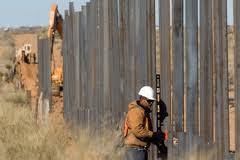Border securityBorder fence proposal draws sharp criticism in Idaho
A recently proposed plan to build fences along a 4,000-mile stretch of the U.S.-Canada border has caused quite a stir among residents of Idaho; last month U.S. Customs and Border Protection (CBP) officials held a meeting in Naples, Idaho to discuss several strategies for border enforcement and open its proposals for public comment

Idaho border fence proposal raises the hackles of some // Source: wordpress.com
A recently proposed plan to build fences along a 4,000-mile stretch of the U.S.– Canada border has caused quite a stir among residents of Idaho.
Last month U.S. Customs and Border Protection (CBP) officials held a meeting in Naples, Idaho to discuss several strategies for border enforcement and open its proposals for public comment.
Officials assured residents that they were only discussing a proposed document that analyzed the potential environmental impacts of several possible security strategies, but meeting attendees were particularly alarmed about the prospects of building even a series of small fences.
In a statement, State Representative George Eskridge (R - Dover) adamantly opposed the construction of any fences along the northern border.
“No matter how small or short in distance, any unilateral action to build a fence sends the worst possible message to our neighbors and friends to the north as well as to the rest of the world,” Eskridge said.
Meanwhile some participants said existing security measures along the border were already too excessive.
“Probably half the people I know don’t go to Canada anymore,” said Johnna Exner, a resident of Washington, Idaho who owns property less than a mile from the border. “It’s too much of a hassle.”
In an effort to assuage concerns, James Frackelton, a spokesman for CBP, said, “We never intended the kind of fencing you might see on the southern border. This is more along the lines of fencing you would use on your own property.”
According to the CBP proposal, fencing would only be used in small sections to “manage movement in trouble spots where passage of cross-border violators is difficult to control.”
In total, the document presented five options that ranged from doing nothing to building roads, cutting trenches, and installing towers and fences to minimize illegal crossings.
Aside from doing nothing, one proposed option was to expand the use of ground sensors, unmanned surveillance drones, and short-range radar, while another emphasized the construction of new CBP stations and upgrading existing ones. The final proposal included a mixture of the previous four strategies to create a balanced security policy.
CBP said the environmental plan’s purpose was to provide the agency with “the flexibility to expand or alter its activities over the next five to seven years to maintain effective control of the northern border.”
According Frackelton, CBP’s main concerns along the border were preventing drug trafficking and the transportation of illegal weapons.
“After we do risk analysis, we’re going to do the thing that makes sense for the area and the taxpayers,” he said.
